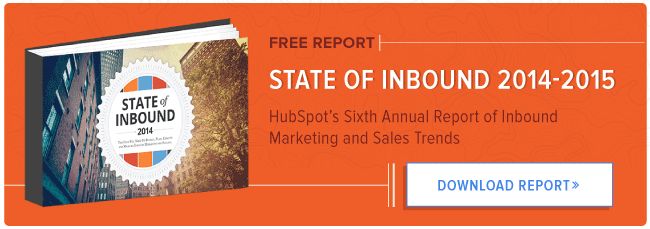There’s a misconception floating around the marketing world that European marketers are 12-18 months behind their North American counterparts in adopting new marketing paradigms.
While this may have been true in the past, European marketers have progressed in leaps and bounds over recent years. In fact, the data from our 2014 State of Inbound report shows European marketers are just as advanced at inbound marketing strategies and tactics as North American marketers.
Pretty cool, eh? And I’m not just saying that because I’m European — the growth in adoption of inbound marketing practices in Europe are, objectively, quite impressive. From the data, we can see that inbound is growing so fast simply because it’s working: 34% of marketers in Europe saw a greater ROI on their inbound marketing activities than the previous year.
Let’s take a deeper dive into how European marketers have caught up with their North American counterparts — and what the future of inbound marketing looks like on both continents.
Inbound Marketing in Europe & North America
Adoption of an Inbound Strategy
In 2013, we discovered that the adoption of inbound marketing in Europe (58%) was growing alongside that in North America (59%). This year, we paid special attention to the astounding growth that both the U.S. and Europe have seen.
According to the 2014 State of Inbound report, 86% of marketers, in both the North America and Europe, have adopted an inbound marketing strategy. That’s a staggering 28% growth in Europe and 27% growth in North America
These figures are a positive sign for the industry, and they show that the revolution of inbound marketing is making a powerful impact on how marketers now communicate their brand messaging to their target audience. It’s also transforming the way marketers allocate their marketing budget.
Top Inbound Marketing Goals
Last year, in 2013, European marketers’ top goals related to inbound marketing were tied between reaching the right audience (23%) and generating new leads (23%). North American marketers focused on converting their existing leads into customers.
In 2014 however, both the North America (24%) and Europe (27%) are now aligned in their goals, and lead generation comes out as the top priority across the board.
Europeans are still focused on growing the top of their funnel, and have realised that creating great content is the way to achieve this.
Finally, according to our survey, 52% of Europeans understand that content marketing is a subset of inbound marketing — even more so than marketers in North America (44%). The survey also indicated that blogging is the most important inbound marketing project, with 21% dedicating resources to this tactic in both the Europe and North America.
Biggest Marketing Challenge
Both North America and Europe are still struggling to calculate the ROI of their inbound marketing efforts, although improved from last year. In 2014, 28% of marketers in Europe indicated calculating ROI to be their biggest marketing challenge, along with 29% in North America.
ROI of Inbound Marketing Efforts
In 2013, 30% of European marketers confirmed that inbound generated positive ROI for their company. They were lagging behind North America, where 41% marketers saw positive returns. But this year, in 2014, 34% of marketers in Europe saw a greater ROI on their inbound marketing activities than the previous year — so we’re heading in the right direction.
The Future of Inbound Marketing in Europe & North America
At this point, marketers in Europe on as advanced as marketers in North America — there is no longer a “gap” thanks to the immense progress European marketers have made in the last year.
Our data shows that marketers in Europe understand that content marketing is a vital cog in the inbound machine, and that implementing a solid content strategy into their inbound strategy will help them achieve their main goal of generating new leads (and, ultimately, new business).
As marketers across the globe get better at and do more with inbound marketing, our data shows they need to work on measuring their ROI. The best way for them to do this is by bringing together multiple, disparate marketing tools to show what is yielding the best results. This will increase visibility into what works and allow them to better allocate budget and resources — and, in full circle, generate real business revenue.
Inbound has no borders. Consumers around the world want to learn by consuming great content that helps them achieve their own goals — and they want to consume it at their own pace. The concept is evolving from just a marketing strategy into all departments of a business, including sales, services, and HR. The inbound revolution will continue to transform the way businesses market, sell, and recruit, thus improving the way we, as consumers, experience the brands that adopt it.
New Data Shows European Marketers Aren't Lagging Behind North America

No comments:
Post a Comment